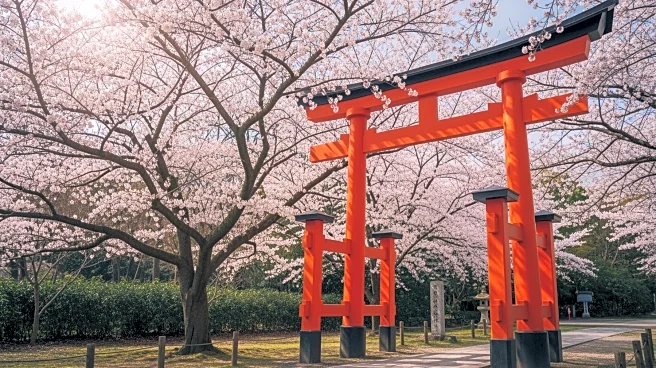What's Happening?
Japan has experienced a series of at least 25 earthquakes off its coast within a 24-hour period, with magnitudes reaching over 6.0. The most significant quake was recorded at a magnitude of 6.8, prompting
a tsunami warning that was later canceled. These seismic activities occurred approximately 75 miles off the coast of the Iwate Prefecture, with one quake near the Hokkaido Prefecture. The United States Geological Survey (USGS) and the Japan Meteorological Agency (JMA) have been monitoring the situation closely. The initial tsunami warning was downgraded to a forecast, indicating only minor sea level changes were expected.
Why It's Important?
Japan is located on the Pacific 'Ring of Fire,' a region known for its high seismic activity due to tectonic plate interactions. This makes Japan one of the most earthquake-prone countries in the world, experiencing about 1,500 earthquakes annually. The potential for earthquakes to trigger tsunamis poses a significant risk, as seen in the 2011 disaster that led to massive loss of life and a nuclear crisis in Fukushima. The recent earthquakes highlight the ongoing vulnerability of Japan's complex coastline to seismic and tsunami threats, necessitating constant vigilance and preparedness.
What's Next?
Although the tsunami advisories have been lifted, Japanese authorities continue to warn residents to remain vigilant for potential aftershocks. The Japan Meteorological Agency has indicated that the risk of significant tremors remains high for the next two to three days. Residents in affected areas are advised to stay informed and prepared for any further developments.












